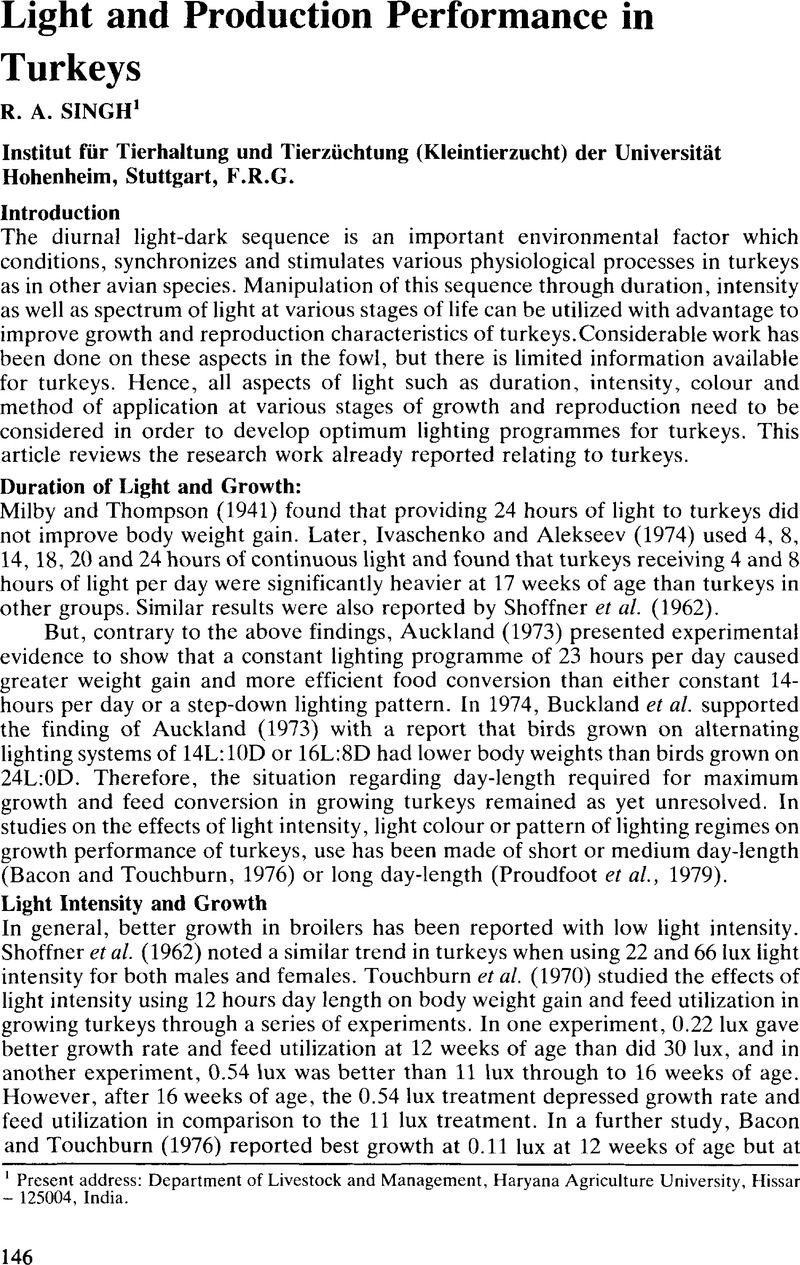Crossref Citations
This article has been cited by the following publications. This list is generated based on data provided by Crossref.
Slaugh, B.T.
Johnston, N.P.
and
Bramwell, R.K.
1990.
Effects of photoperiod on reproduction in turkey breeder hens.
Theriogenology,
Vol. 33,
Issue. 6,
p.
1157.
Lien, R. J.
and
Siopes, T. D.
1991.
Influence of thyroidectomy on reproductive responses of male domestic turkeys (meleagris gallopavo).
British Poultry Science,
Vol. 32,
Issue. 2,
p.
405.
Martrenchar, A.
1999.
Animal welfare and intensive production of turkey broilers.
World's Poultry Science Journal,
Vol. 55,
Issue. 2,
p.
143.
Proudman, J.A.
and
Siopes, T.D.
2005.
Thyroid hormone and prolactin profiles in male and female turkeys following photostimulation.
Poultry Science,
Vol. 84,
Issue. 6,
p.
942.



